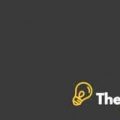Annual Report
Part 1: External Analysis
Inditex with its flagship brand Zara should look to enter New Zealand market, which is still untapped by the company. Zara at the moment is the world’s largest apparel brand with more than 5,000 retail stores worldwide in more than 82 countries. Its global profile suggests that more than 60% of the sale for Zara comes through women while 25% sales is made from the sale male of clothing while remaining 15% sales is covered by children section.
Potential Customers
|
Market Analysis - Auckland |
Expected Growth Rate per annum |
2011 |
2012 |
2013 |
2014 |
2015 |
|
Female University Students |
5% |
25,400 |
26,670 |
28,004 |
29,404 |
30,874 |
|
Female Office Workers |
4% |
104,400 |
108,576 |
112,919 |
117,436 |
122,133 |
|
Young stay at home mothers |
2% |
20,200 |
20,604 |
21,016 |
21,436 |
21,865 |
|
TOTAL Target Market |
150,000 |
155,850 |
161,939 |
168,276 |
174,872 |
Euro monitor data
As per the Euro monitor Data, the apparel industry is on the growth stage. Asia has been identified as the region which has the most potential to grow in the future within the rapidly growing apparel industry. Companies such as H&M and Zara are expanding itself through international expansions every year. Along with this they use multi-brand strategy to actually avoid marketing similar collections. Products are also sold online with companies using online channels to promote their brands. In fact, Inditex has developed sustainability with its communication strategy and by overcoming ethical and environmental concerns. It is focusing on integrating supply chain and stores.
Porter Five Forces Model
Bargaining Power of buyer: Medium
The bargaining power of buyer is moderate for the industry. The reason it is moderate because people have become quality conscious and they are willing to spend extra money for trendy and fashionable goods. With Inditex as a stylish brand, it makes customer pay prices set by the brand.
Bargaining Power of Supplier: Low
With the increasing competition in the industry, the bargaining power of supplier has become quite low. Competitors offer discounts, promotions and lesser prices to attract customers.
Degree of Rivalry: High
The bargaining power of rivalry is high. Intense competition among H&M, Zara, and Gap makes the industry highly competitive.
Threat of Substitutes: Medium
The threat for substitute products in apparel industry is quite low. The reason for the industry being moderate is that there is low switching cost associated with the apparel industry and people have options of various brands to choose from.
Threat of New Entrant: Low
The threat of new entrants is quite low. The reason is that it requires high fixed cost. Along with this, it requires longer period of time to adjust and work in such a saturated industry.
Industry Definition
Apparel industry is a multi-billion dollar global industry, which is devoted towards making apparels throughout the world. It is largely a discretionary purchase industry when compared to other consumer goods which makes it prone to economic instabilities. Apparel sales have shown strong growth in emerging industries of Asia and made people aware of using branded goods for themselves.
Part 2: Company strategy
How well is Inditex performing overall and financially?
Inditex has been performing quite well in the apparel industry and has become the third largest apparel supplier in the world with global presence around the world and over 6,000 stores worldwide. Inditex’s flagship store is brand Zara, while it also operates a number of other apparel chains too which include: Pull & Bear, Oysho, Uterqüe, Massimo Dutti, Bershka and Stardivarius. The company has achieved impressive value sales CAGR of 9.0% over 2007-2012; on account of being low priced with fashionable products offered to customer that has resonated well with customers around the world. The company has been successful with opening up 482 more stores in 64 locations.
The company has expanded into five new countries namely Ecuador, Georgia, Armenia, Bosnia-Herzegovina and Macedonia. The company achieved an impressive value sales CAGR of 9.0% over 2007-2012, on account of its low priced and fashionable produce offering, which has resonated well with consumers globally. In 2012, Inditex alone opened a net 482 new stores in 64 different markets. This included expansion into five new countries namely Armenia, Bosnia-Herzegovina, Ecuador, Georgia and Macedonia.
How well performing versus leading competitors – especially H&M?
Inditex has grown rapidly to takeover its competitors in the industry especially H&M and Gap. Inditex has been placed at third position in 2012 with growth of 8%; which enabled it to surpass the biggest rival of the company H&M which had growth of 7%. The key to success has been its successful multi-brand strategy with low reliance on.................................
This is just a sample partial case solution. Please place the order on the website to order your own originally done case solution.
ZARA fashion retailer has achieved impressive growth through distinctive design-on-demand operating model. This case describes the model and provides a number of challenges facing the company, with particular emphasis on its international expansion. Includes color exhibits.
This case is only available in paper format (HBP do not have the rights to distribute digital content). As a result, a digital copy of an educator if not available through this Web site.
To enhance their effectiveness, color cases should be printed in color. "Hide
by David J. Arnold Source: Harvard Business School 26 pages. Publication Date: March 12, 2003. Prod. #: 503050-PDF-ENG











